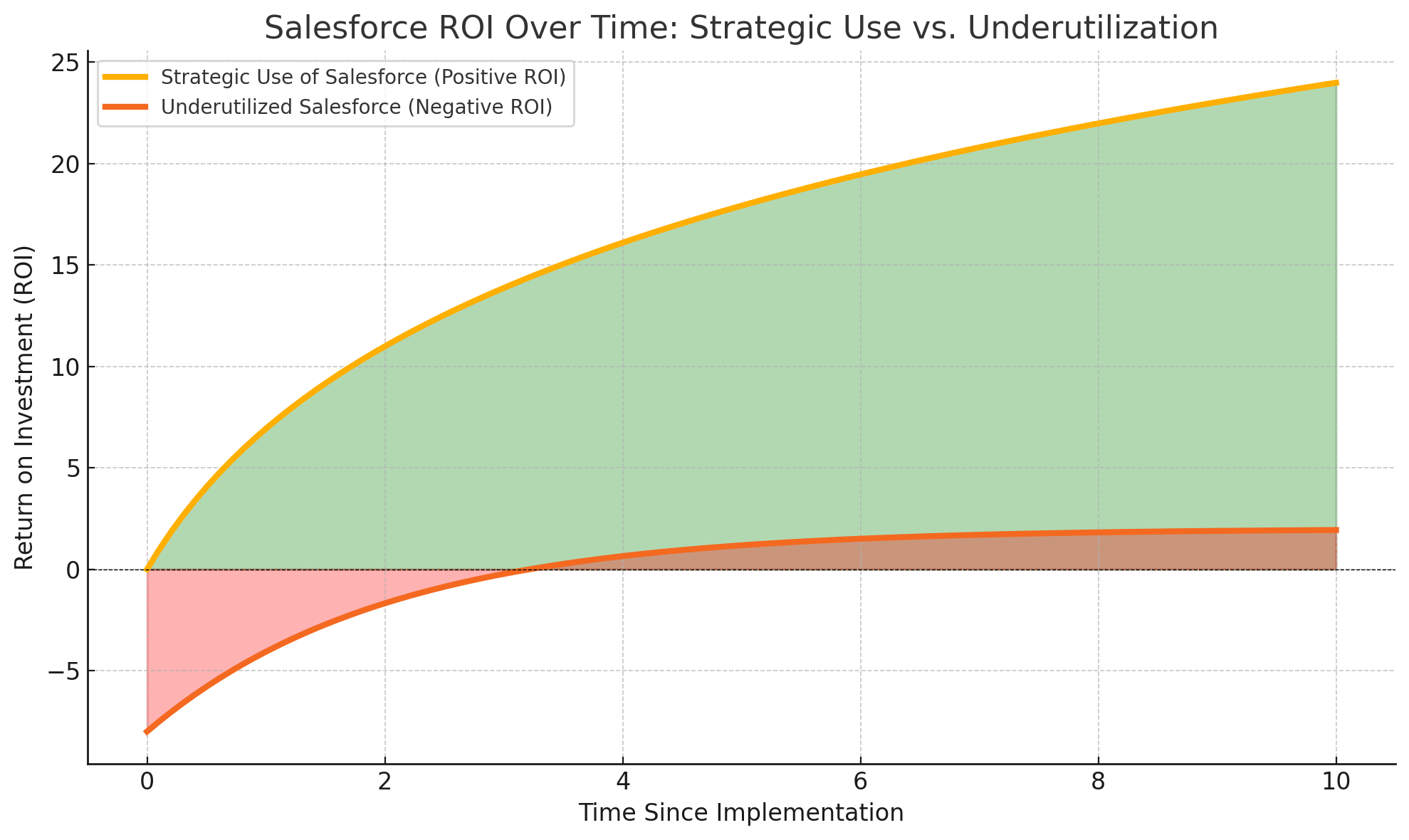Implementation Is a Foundation, Not the Finish Line
Too often, Nonprofit organizations treat Salesforce implementation as the end goal. They migrate data, set up basic functionality, and deliver a round of staff training. But without a long-term enablement plan, this approach can quickly lead to underutilization, user frustration, and missed opportunities.
Implementation is foundational. It establishes the infrastructure for success, but infrastructure alone doesn’t generate outcomes.
Efficiency and Enablement Drive ROI
The organizations that see the most value from Salesforce are those that go beyond implementation and invest in:
1. User Adoption and Training
No system is effective if users avoid it. High-performing Nonprofits embed Salesforce into their daily workflows, ensuring that management & staff understand not just how to use the platform, but how it supports their individual roles and broader organizational goals.
Ongoing training, especially during staff turnover or when new features are added, is essential. Real ROI comes when Salesforce becomes the single source of truth and the default system for donor management, volunteer engagement, program delivery, and reporting. The management and executive team must lead by example.
2. Process Optimization
Salesforce should evolve as the organization grows. The initial implementation captures current needs, but continued improvement is necessary to adapt to changing goals, new programs, and data insights. Streamlining processes, reducing manual entry, and automating tasks are all ways Nonprofits improve operational efficiency and staff satisfaction.
3. Data Quality and Reporting
A CRM is only as valuable as the data it contains. Investing in regular data audits, duplicate prevention, and governance ensures better reporting and decision-making. The true strategic power of Salesforce is unlocked when users have real-time access to clean, actionable insights.
4. Strategic Use of Features and Integrations
From core features to Experience Cloud to third-party integrations, Salesforce offers powerful tools to deepen engagement and impact. But leveraging these tools strategically, and ensuring they align with mission priorities, is where value compounds.
A Strategic Partner Makes the Difference
Salesforce’s flexibility is a double-edged sword. It can be configured a hundred ways to support your mission, but doing so effectively takes Nonprofit sector expertise. That’s why many Nonprofits turn to specialized Salesforce consulting partners not just for implementation, but for ongoing advisory services, support, and enablement.
An experienced consulting partner can help assess your current usage, identify areas for improvement, and prioritize enhancements that deliver measurable ROI, whether that’s in staff efficiency, donor retention, program impact, or revenue growth.
Conclusion: Value is Earned Over Time
Salesforce is not a “set-it-and-forget-it” platform. The most successful Nonprofit organizations view it as a dynamic asset: one that requires care, investment, and strategic direction over time.
Implementation is just the first chapter. The ROI story is written in how efficiently and effectively your teams use Salesforce every day.
If your organization is ready to shift from using Salesforce to mastering it, we’d be glad to help. Let’s start a conversation about maximizing your impact through smarter, more strategic CRM usage.
Have questions or want to explore how Managed Services can support your Salesforce Nonprofit Cloud journey?

